12
7) CANNERIES - Noah Jollimore Lobster Factory, Brule, Nova Scotia, Canada1898
Jollimore's Point, Brule, Nova Scotia, Canada
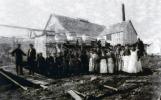 Credits:
Credits:North Shore Archives CSHC
13
Noah Jollimore's lobster cannery at Jollimore's Point, Brule consisted of a factory, cookhouse and a bunkhouse. The factory was in operation until the early 1940s. The clothing of the women looks very impractical for such a messy and rather smelly job.At the start of the canning industry no-one locally had the skills required, so the skilled labour needed to be 'imported' from elsewhere; Cape Breton especially was a source of employees.
14
John Myers Cannery, Brule, Nova Scotia, Canada1906
Brule Point, Nova Scotia, Canada
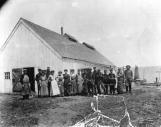 Credits:
Credits:North Shore Archives CSHC
15
The Langille Cannery, with lobster boats, typical of the period. In the next picture are the wood traps commonly in use then. Fishermen would make their own, and one can still find old traps along the shore, which people find attractive as an addition to their garden. The wood traps were replaced by metal and plastic cages, but there seems to be a trend back to the wood one.16
J.D. Langille Cookhouse, Brule, Nova Scotia, Canada1910-1920
Brule Point, Nova Scotia, Canada
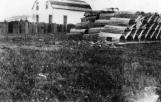 Credits:
Credits:North Shore Archives CSHC
17
David Stevenson owned a farm at the east end of Brule Point, and he built a factory, bunkhouse and cookhouse that was later taken over by Roy Weatherbie. David presumably went on with his farming.18
D.E. Stevenson Lobster Cannery, Brule, Nova Scotia, Canada1900
Brule Point, Nova Scotia, Canada
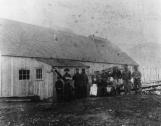 Credits:
Credits:North Shore Archives CSHC
19
Distribution of Canneries, Wallace and Malagash, Nova Scotia, CanadaLate 1800 - 1920
North Shore, Nova Scotia, Canada
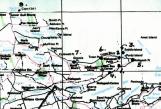 Credits:
Credits:North Shore Archives CSHC
Sam Treen
20
Key to CanneriesMalagash
#1,2: Owned by George Langille; closed down in 1953
#3: On Saddle Island, owned by Boyd Whiting, ran from 1912 to early 1930s. Buildings may have been moved from plant on Peninsula Point, Brule while the strait was frozen.
#4: Malagash Wharf
#5: Owned by Ed MacLennan, Tatamagouche
#6: Owned by Alfred Betts, on Treen Point, near present Malagash Park
#7: Owned by George Allen, located in East Wallace, 1940s-1950s
#8: Owned by Gordon MacInnes near Cape Cliff (Possibly Seaman's cannery which was at Cape Cliff)
21
E.C. McLellan Lobster Cannery, Malagash, Nova Scotia, Canada1898
Malagash, Nova Scotia, Canada
 Credits:
Credits:North Shore Archives CSHC
22
The first Malagash cannery was built by Dan Matheson for Burnham and Morrell, an American firm. They had a large factory on Saddle Island, employing 60 people, including fishermen. They also had canneries in River John (1905-1910) and in Brule (1886-1902).A schooner was chartered to bring in bait from the Magdeline Islands, and was sometimes delayed by bad weather.
When lobster fishing, the lobsterman hauled the traps in over the stern, and emptied them into the well of the boat; a ring of rocks around the gunwales prevented the lobsters escaping overboard. In 1912 fishermen received 1 cent per lobster, regardless of size.
23
Fishing Fleet at Brule, Nova Scotia, Canada1900
Brule, Nova Scotia, Canada
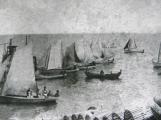 Credits:
Credits:North Shore Archives CSHC
24
In the early 1920's, Arthur Dewar, who fished for MacInnis as a young man, used to take his sail boat out several times a day and get a boat load of lobsters each time. One year the lobsters were so plentiful the fishermen were paid to stay ashore and to only go out two or three days a week. All the boys and girls they could get were then hired to can the catch, and the smallest lobsters were thrown into the shell box.25
Seamans Lobster Cannery, Cape Cliff, Nova Scotia, Canada1900
Malagash, Nova Scotia, Canada
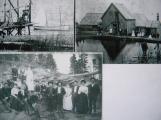 Credits:
Credits:Wallace and Area Museun
Ellen Millard